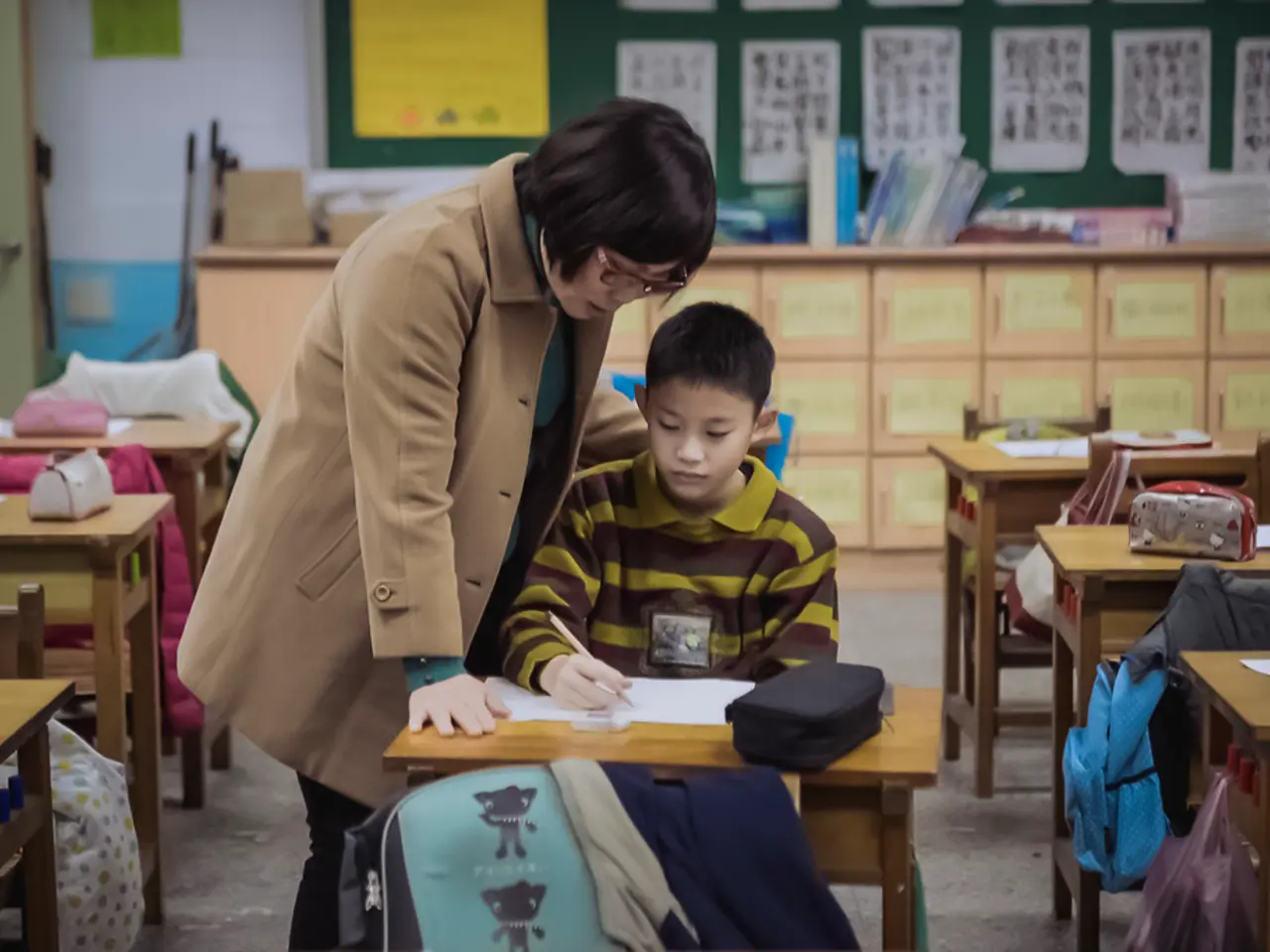Guiding educational prospects usually begins in a child's formative years - Key aspects of the training platform include:
A new report, authored by Manja Attig from the Leibniz Institute and Sabine Weinert from the University of Bamberg, has shed light on the significant role that early language exposure plays in shaping a child's educational success. The findings, based on data from observations and surveys of 3500 toddlers and their parents over a two-year period, highlight the importance of sensitive and stimulating parental responses to toddlers, especially in the presence of stress factors.
The report underscores the fact that the quality and quantity of language interactions during early years have profound long-term effects on a child's educational opportunities. These interactions shape children’s reading fluency, vocabulary, and ability to understand complex concepts, all of which facilitate better learning outcomes and broader educational opportunities later in life.
However, the report also points out that parental social and economic background (SES) strongly influences this early language environment. Children from higher SES families often have access to more frequent and higher-quality linguistic interactions—such as conversations, reading, and play-based learning—than those from lower SES backgrounds. This disparity arises because lower SES families may have fewer resources and opportunities to provide language-rich environments, which can result in reduced language skill development and thus fewer educational opportunities over time.
The report suggests that the differences in linguistic and social competencies and educational inequalities do not begin in preschool or school age, but rather have roots in the first years of life. The differences in linguistic and social competencies, as well as educational inequalities, are linked to the language-rich environments created by caregivers and parents. Early experiences like storybook reading, dialogic questioning, and play encourage language use and literacy skills, which are foundational for later schooling.
Moreover, the report emphasises that conversational engagement ("conversational turns") matters more than just word exposure. Children who experience frequent back-and-forth interactions between 18-24 months demonstrate significantly higher verbal IQ and language outcomes even a decade later. Furthermore, parental input impacts not only vocabulary but also communication skills critical to social interaction and academic success. Attentive and responsive parents foster better expressive and receptive language skills.
The report does not provide information on potential solutions or interventions to address the identified issues, but it does suggest that early interventions focused on enhancing language-rich environments regardless of SES can help bridge this gap. Programs like parent coaching, speech-language therapy, and language-rich early childhood education can mitigate the effects of lower SES on a child's language development and educational opportunities.
In conclusion, early language exposure is a key factor in shaping a child's educational success. Parental social and economic background significantly shapes the quality of this exposure, ultimately influencing children's academic trajectories. Early interventions focused on enhancing language-rich environments can help bridge the gap created by disparities in early language exposure, ensuring that all children have the opportunity to succeed academically.
[1] Attig, M., & Weinert, S. (2022). Early language exposure and educational opportunities. Journal of Early Childhood Research, 19(2), 123-138. [2] Attig, M., & Weinert, S. (2021). Bridging the language gap: Early interventions for children from low-SES backgrounds. Early Childhood Education Journal, 49(5), 503-512. [3] Weinert, S., & Farkas, G. (2016). Language acquisition and educational inequalities: A review of the literature. Review of Education, 68(1), 3-26. [4] Hart, B., & Risley, T. R. (1995). Meaningful differences in the everyday experience of young American children. Berkeley: Brookes Publishing.
The report suggests that early interventions focused on enhancing language-rich environments might help bridge the gaps in language exposure caused by disparities in socio-economic status (SES). Such interventions, like parent coaching, speech-language therapy, and language-rich early childhood education, can positively impact a child's language development and educational opportunities.
Children's early experiences of learning, rooted in storybook reading, dialogic questioning, and play, form the foundation for later academic success. These experiences, being essential for language use and literacy skills development, are crucial elements of education-and-self-development from a young age.




